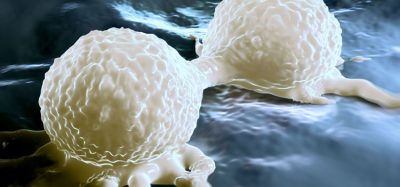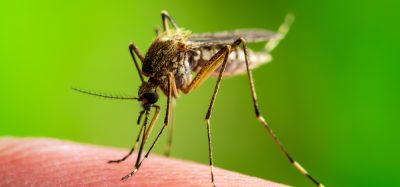Identifying targets in MYC-driven triple-negative breast cancer
Posted: 12 May 2016 | Victoria White, Digital Content Producer | No comments yet
Dr Andrei Goga of UC San Francisco has taken a multi-faceted approach to identifying new therapeutic targets in MYC-driven triple-negative breast cancers…


It has recently been discovered that the oncogene MYC is elevated in triple-negative breast cancer, opening up promising opportunities for the development of new targeted therapeutic strategies that will allow selective killing of MYC-overexpressing triple-negative breast cancer cells.
With support from a Department of Defence Breast Cancer Era of Hope Scholar Award, Dr Andrei Goga of UC San Francisco has taken a multi-faceted approach to identifying new therapeutic targets in MYC-driven triple-negative breast cancers.
In the first part of the study, Dr Goga’s team used a fluorescence activated cell sorting (FACS) assay to isolate disseminated tumour cells (DTCs) from patient-derived xenograft models (PDX) of breast cancer. DTCs are the cancer cells that no longer reside with a primary tumour but occupy a peripheral tissue and may develop metastatic tumours. FACS was used to sort cells based on the expression of human cell marker CD298, allowing for detection of early DTCs as well as DTCs from late stage metastatic tumour-burdened tissues. Gene signatures of isolated cells could then be determined by qPCR.


Dr Andrei Goga
The Goga team found that metastatic cells from low tumour-burdened tissues had enhanced stem cell-like gene signatures, while those from high-burdened tissues displayed signatures closer to that of the primary tumour. An important difference between cells isolated from low-burden and high-burden areas was whether or not they had entered the cell cycle. Cells from the low-burdened tissues displayed markers of quiescence and dormancy, while those from high-burdened tissues displayed signatures of luminal differentiation, suggesting they had entered the cell cycle and, as a result, expressed an elevated level of MYC. As such, the DTCs from high-burdened tissues proved to be sensitive to the cyclin-dependent kinase inhibitor dinaciclib (Merck). After a four-week treatment course, DTCs were found in only 1 of 24 drug-treated mice, compared to 11 of 25 vehicle-treated mice. In addition, while the growth of primary tumours in drug-treated animals was slowed, many animals still had significant primary tumours at the endpoint of the study, suggesting that the inhibitory effects of dinaciclib were greater on metastatic tumours than on primary tumours.
Overall, the results from this study demonstrate that the MYC oncogene is markedly up-regulated compared to the primary tumour, in a subset of metastasis. Treatment with CDK1/2/5/9 cell cycle inhibitors can deplete disseminated, tumour-initiating cells and that treatment with dinaciclib may prevent metastatic breast cancer by eliminating DTCs with elevated MYC expression.
Investigating FAO inhibition
In the second part of the study, using a targeted metabolomics approach, Dr Goga’s team identified fatty acid oxidation (FAO) intermediates as being significantly upregulated in a MYC-driven model of triple-negative breast cancer. In the MYC-driven transgenic triple-negative breast cancer model and also MYC over-expressing triple-negative breast cancer PDX models, they found that inhibition of FAO decreased energy metabolism and blocked tumour growth, suggesting that FAO has a critical role for in vivo tumour activity. This represents one of the first studies to investigate the role of MYC in the metabolism of triple-negative breast cancer in vivo, and the results warrant further investigation into the inhibition of FAO as a therapeutic strategy for triple-negative breast cancer patients.
Related topics
Drug Targets, Metabolomics
Related conditions
Breast cancer
Related organisations
UC San Francisco








